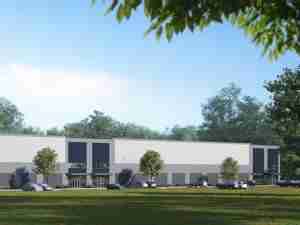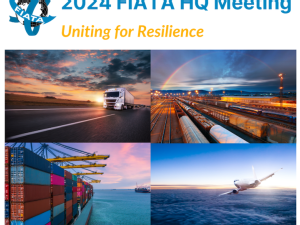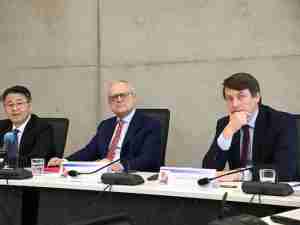Construction lights were so bright they were confusing to pilots who tried to land at night in July 2017 when a fatigued Air Canada crew almost struck four aircraft on the ground in San Francisco, according to preliminary reports.
The National Transportation Safety Board released more than 500 pages of investigative reports Wednesday, including a video recording of the July 7 event, but didn’t reach conclusions on what caused the airliner to come within feet of triggering a catastrophe.
Both pilots reported that they felt fatigued in the latter stages of their flight from Toronto. They were landing at about midnight local time, which was the equivalent of 3 a.m. where they had slept the night before, according to NTSB. The captain told investigators he may have gotten less than six hours of sleep and his rest had been disrupted by a late flight the previous night.
As the Air Canada plane approached the runway, the copilot thought something “didn’t look right,” he told investigators. However, he wasn’t certain what was wrong and was “unable to process what he was seeing,” the NTSB said.
The copilot told the captain, who was at the controls, to abort the landing and climb at about the same time the captain decided on his own to do the same thing, according to the NTSB. Seconds later, an air-traffic controller radioed to the plane a command to cancel the landing.
Pilots on a flight that arrived in San Francisco four minutes earlier told investigators that “construction lights were so bright we could not determine the location” of the only runway open for landing that night. An adjacent parallel runway to the left of where they were cleared to land was under construction and closed that night.
Both pilots on the previous flight said they checked with their on-board instruments to ensure they were lined up for the proper runway.
The NTSB released a low-definition, black-and-white video recording that showed the Air Canada plane passing close to the planes on the ground. It flew above or near two planes before climbing, the video shows.
The Air Canada Airbus SE A320’s pilots were supposed to land on the right of two parallel landing strips at San Francisco International. Instead, they lined up to touch down to the right of that runway on a taxiway where four planes were idling as they waited for permission to takeoff. The second parallel runway on the left side was closed for construction that night.
At 59 Feet
The incident came within feet of causing a fiery collision between two or more aircraft, according to NTSB data. The Air Canada plane was as low as 59 feet (18 meters) from the ground as the pilots aborted the landing and tried to climb, according to earlier releases from the NTSB.
The tail on the Boeing Co. 787 that was first in line on the taxiway is almost 56 feet high, according to the company’s website. That United Airlines plane had turned to enter the runway and the Air Canada plane appears to have passed just behind it, according to a radar plot released by NTSB.
Next in line was a Philippine Airlines A340-300, a widebody jet with a tail that’s about the same height or slightly higher than the 787’s, according to Airbus’ website.
The pilot of the United plane had attempted to raise alarms about the Air Canada plane’s flight path in air-traffic radio transmissions.
“Where’s this guy going?” the pilot said. “He’s on the taxiway,” he added a few seconds later as the Air Canada plane passed just behind him.
Two 747s Collided
The risk of collisions on the ground has been raised as a safety issue by the NTSB for decades. The highest death toll ever in an airline accident occurred on the ground when two Boeing 747s collided on a runway in 1977 in Tenerife, Canary Islands, killing 574 people.
One issue the NTSB is investigating is a warning system that tracks planes on or near the ground. The Federal Aviation Administration’s air-traffic controller said the Air Canada plane disappeared briefly from the warning system’s display shortly before passing over the other planes.
Unlike most accidents and incidents investigated by NTSB, there is no recording of cockpit conversations on the Air Canada plane. The device was overwritten during subsequent flights before it could be pulled from the plane, the NTSB said.











